The small pink flowers were so numerous during the short one to two weeks that they crowned every Japanese cherry tree in sight. The best time to visit Japan was in Spring around mid to late April.
The picture on the right shows us standing on the Takayama bridge behind a fully blossomed cherry tree. Nothing but flowers is the best way to describe the blooming season. When the wind blew, small pink petals would rain on us.
Travelli ng In Japan. It took us a long time to pluck up enough courage to visit Japan on our own. There was a fear of losing our way as we assumed that all street signs would be in Japanese and the people cannot understand nor speak English. These fears were unfounded. We had a very enjoyable experience travelling in Central Honshu visiting Kyoto, Osaka, Nagoya, Takayama, Nara and Fujiyoshida.
ng In Japan. It took us a long time to pluck up enough courage to visit Japan on our own. There was a fear of losing our way as we assumed that all street signs would be in Japanese and the people cannot understand nor speak English. These fears were unfounded. We had a very enjoyable experience travelling in Central Honshu visiting Kyoto, Osaka, Nagoya, Takayama, Nara and Fujiyoshida.
Travel by Japan rail, buses and subways was no problem at all. Two weeks on unlimited travel on Japan Rail cost us Sing$578 per person. This was a considerable discount from the single trip ticket since we were using the railway to travel almost everyday.
cost us Sing$578 per person. This was a considerable discount from the single trip ticket since we were using the railway to travel almost everyday.
JR Passes are only available to foreigners and can only be purchased outside Japan. It is quite simple to reserve seats on trains without additional cost either on the day of travel or before. We travelled on buses and subways in the major cities on subsidized day passes. At each train station, a Japan Tourist Information Bureau office can easily be located. The staff provides advice on the sights and places of interest and the most cost-effective way to get there.
The picture on the right shows us standing on the Takayama bridge behind a fully blossomed cherry tree. Nothing but flowers is the best way to describe the blooming season. When the wind blew, small pink petals would rain on us.
Travelli
 ng In Japan. It took us a long time to pluck up enough courage to visit Japan on our own. There was a fear of losing our way as we assumed that all street signs would be in Japanese and the people cannot understand nor speak English. These fears were unfounded. We had a very enjoyable experience travelling in Central Honshu visiting Kyoto, Osaka, Nagoya, Takayama, Nara and Fujiyoshida.
ng In Japan. It took us a long time to pluck up enough courage to visit Japan on our own. There was a fear of losing our way as we assumed that all street signs would be in Japanese and the people cannot understand nor speak English. These fears were unfounded. We had a very enjoyable experience travelling in Central Honshu visiting Kyoto, Osaka, Nagoya, Takayama, Nara and Fujiyoshida. Travel by Japan rail, buses and subways was no problem at all. Two weeks on unlimited travel on Japan Rail
 cost us Sing$578 per person. This was a considerable discount from the single trip ticket since we were using the railway to travel almost everyday.
cost us Sing$578 per person. This was a considerable discount from the single trip ticket since we were using the railway to travel almost everyday. JR Passes are only available to foreigners and can only be purchased outside Japan. It is quite simple to reserve seats on trains without additional cost either on the day of travel or before. We travelled on buses and subways in the major cities on subsidized day passes. At each train station, a Japan Tourist Information Bureau office can easily be located. The staff provides advice on the sights and places of interest and the most cost-effective way to get there.

I noticed that the Japanese men wore coats and ties to office, even the bus driver’s uniform required a coat and tie. The women usually wore dark jacketed office wear. However, after office and among some young people the dressing could be quite garish. They dressed in their favourite anime or manga characters' kinky outfits.
There was almost no evidence of obesity on the streets, which we attributed to the scurrying nature and fast pace walk of the Japanese. There was a definite cadence and minimum speed as they move in the streets and towards train platforms. Everyone appeared to be in such a hurry. There was no time for sauntering, something Pat discovered, when walking a tad too slow and someone bumped into her. It was not unlike an express way, where there could be no cross walks. If the speed was broken there will be a pile up of human traffic. We saw almost no sign of the so-called 'slit eye' look. Most ladies had big round eyes leading us to believe that they probably had some surgical correction when they come of age
speed as they move in the streets and towards train platforms. Everyone appeared to be in such a hurry. There was no time for sauntering, something Pat discovered, when walking a tad too slow and someone bumped into her. It was not unlike an express way, where there could be no cross walks. If the speed was broken there will be a pile up of human traffic. We saw almost no sign of the so-called 'slit eye' look. Most ladies had big round eyes leading us to believe that they probably had some surgical correction when they come of age
There was almost no evidence of obesity on the streets, which we attributed to the scurrying nature and fast pace walk of the Japanese. There was a definite cadence and minimum
 speed as they move in the streets and towards train platforms. Everyone appeared to be in such a hurry. There was no time for sauntering, something Pat discovered, when walking a tad too slow and someone bumped into her. It was not unlike an express way, where there could be no cross walks. If the speed was broken there will be a pile up of human traffic. We saw almost no sign of the so-called 'slit eye' look. Most ladies had big round eyes leading us to believe that they probably had some surgical correction when they come of age
speed as they move in the streets and towards train platforms. Everyone appeared to be in such a hurry. There was no time for sauntering, something Pat discovered, when walking a tad too slow and someone bumped into her. It was not unlike an express way, where there could be no cross walks. If the speed was broken there will be a pile up of human traffic. We saw almost no sign of the so-called 'slit eye' look. Most ladies had big round eyes leading us to believe that they probably had some surgical correction when they come of age
Customer Service of the Japanese took on an entirely differen t meaning in Japan compared with many other countries in the world that we have visited. Service with a smile reached extraordinary level. Everyone was eager to please to the point of scurrying about to fulfil the wishes of the visitor/ customer. “No tips please, we are here to please” seemed to be the order of the day. It made the customer feel welcome, showered with politeness and decorum. The same standard of service is given both to locals as well as foreigners. We saw no evidence of any superiority complex or the xenophobia that we thought typify the Japan
t meaning in Japan compared with many other countries in the world that we have visited. Service with a smile reached extraordinary level. Everyone was eager to please to the point of scurrying about to fulfil the wishes of the visitor/ customer. “No tips please, we are here to please” seemed to be the order of the day. It made the customer feel welcome, showered with politeness and decorum. The same standard of service is given both to locals as well as foreigners. We saw no evidence of any superiority complex or the xenophobia that we thought typify the Japan ese people. If anything, they went out of their way to please.
ese people. If anything, they went out of their way to please.
 t meaning in Japan compared with many other countries in the world that we have visited. Service with a smile reached extraordinary level. Everyone was eager to please to the point of scurrying about to fulfil the wishes of the visitor/ customer. “No tips please, we are here to please” seemed to be the order of the day. It made the customer feel welcome, showered with politeness and decorum. The same standard of service is given both to locals as well as foreigners. We saw no evidence of any superiority complex or the xenophobia that we thought typify the Japan
t meaning in Japan compared with many other countries in the world that we have visited. Service with a smile reached extraordinary level. Everyone was eager to please to the point of scurrying about to fulfil the wishes of the visitor/ customer. “No tips please, we are here to please” seemed to be the order of the day. It made the customer feel welcome, showered with politeness and decorum. The same standard of service is given both to locals as well as foreigners. We saw no evidence of any superiority complex or the xenophobia that we thought typify the Japan ese people. If anything, they went out of their way to please.
ese people. If anything, they went out of their way to please. 









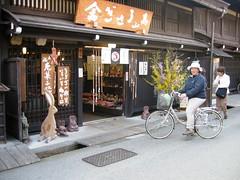
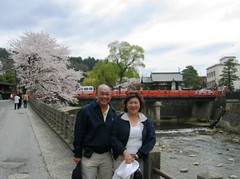

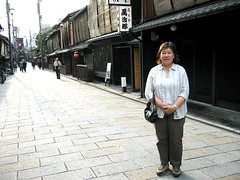





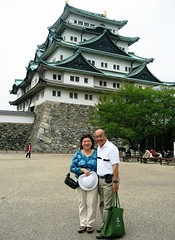

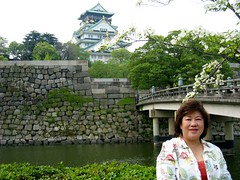


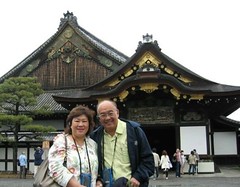


Ninanji.jpg)
Ryoanji.jpg)


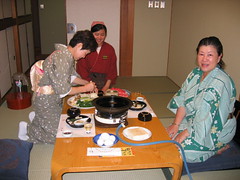
.jpg)
.jpg)
.jpg)
.jpg)